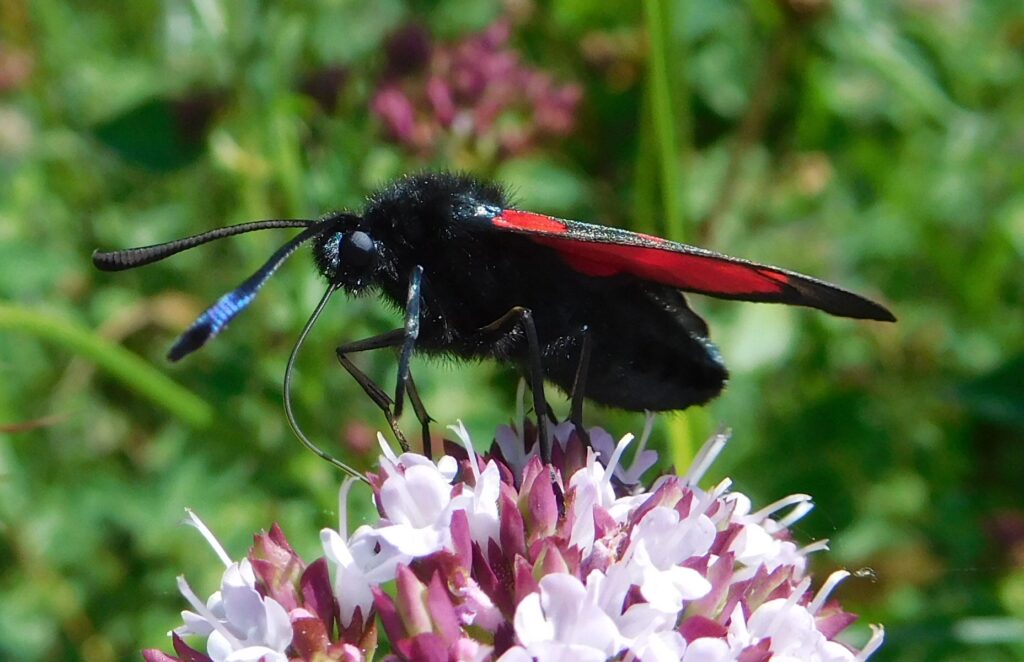
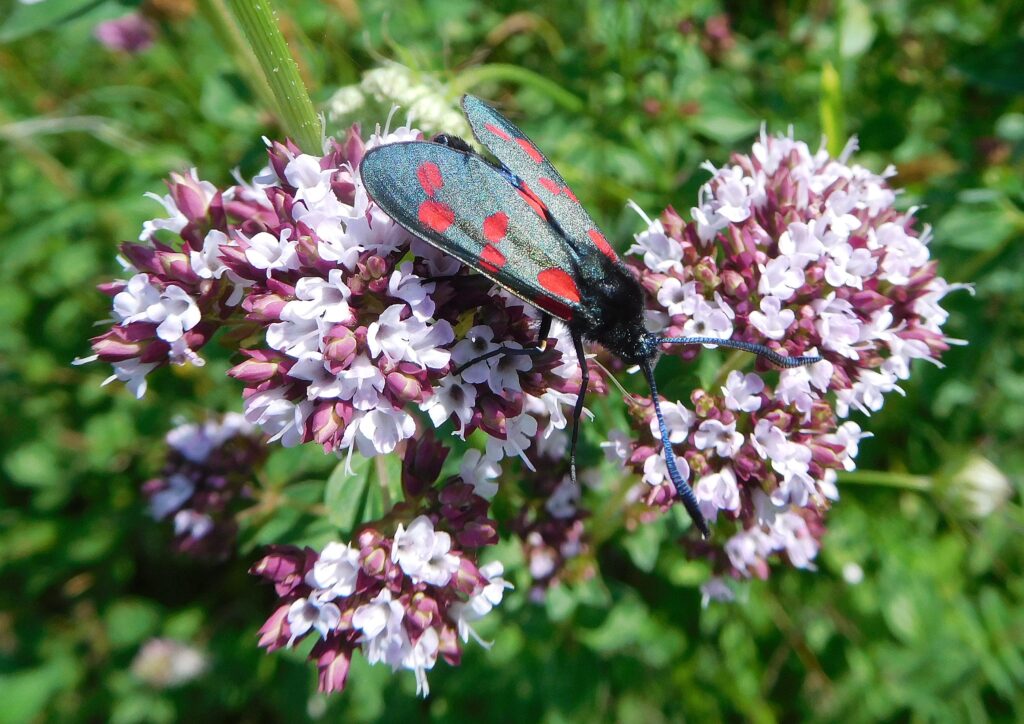
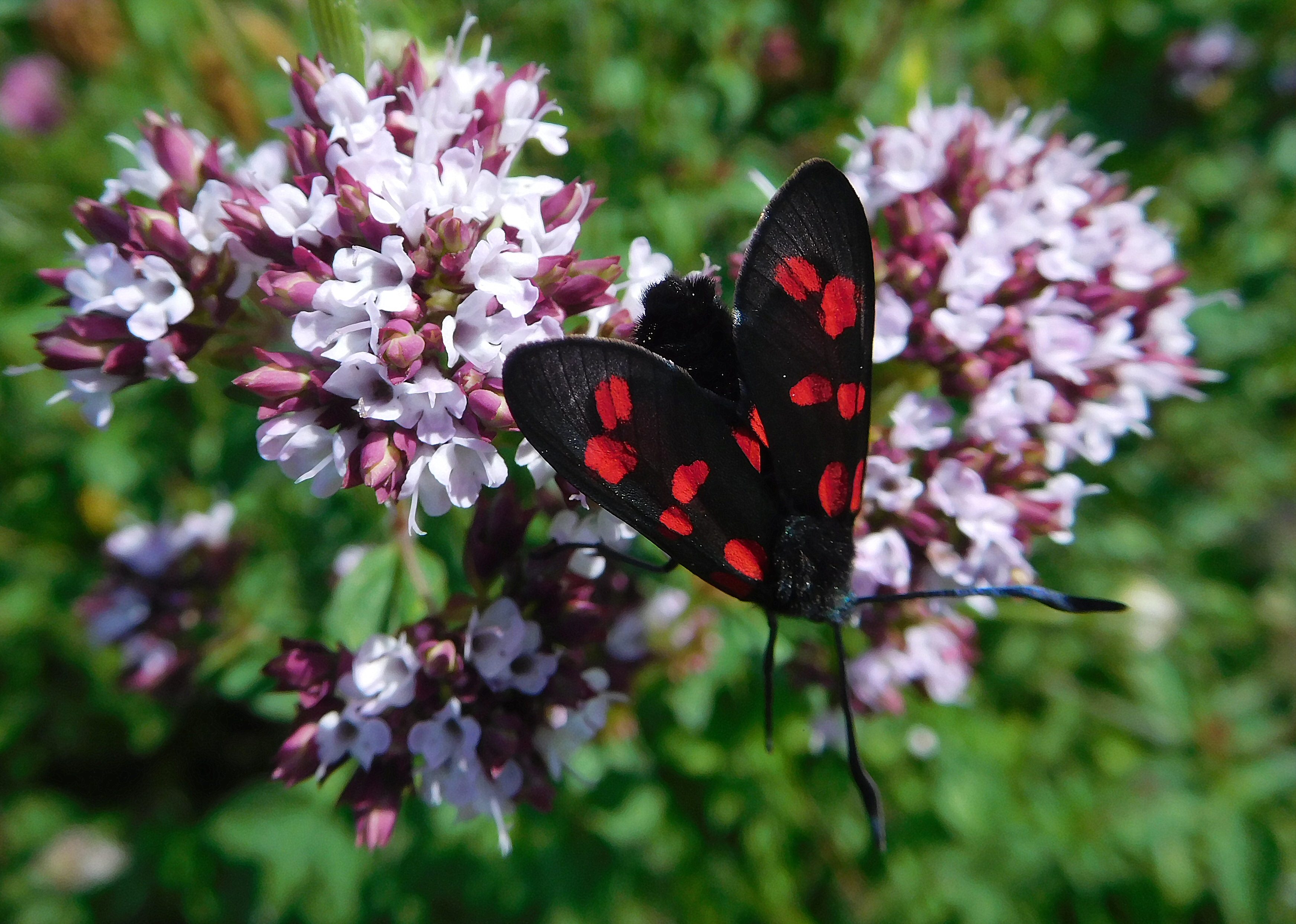
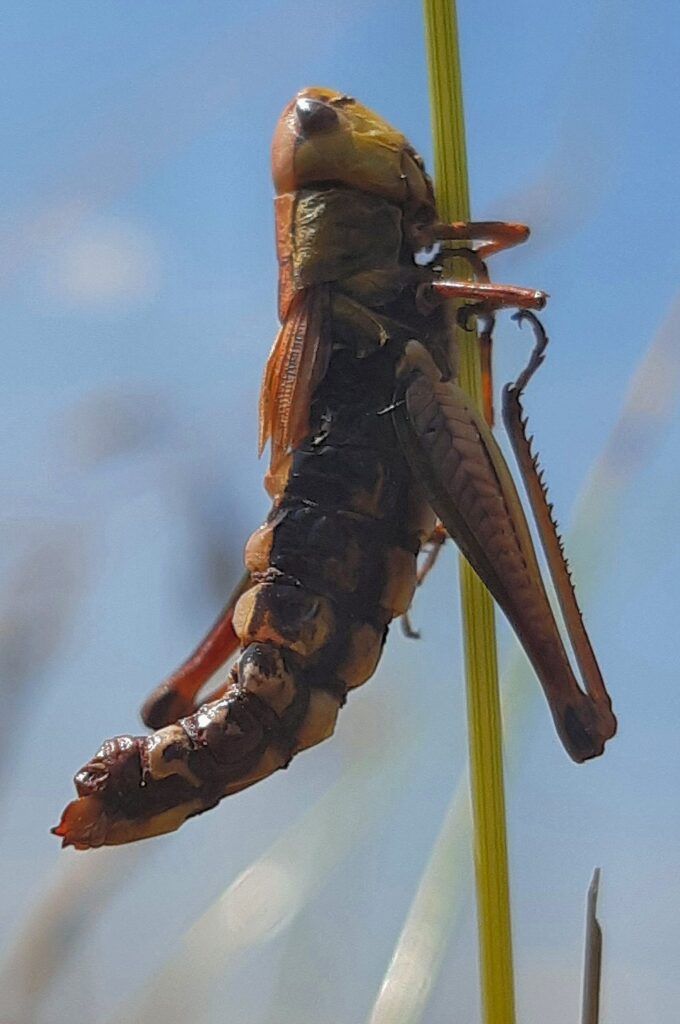
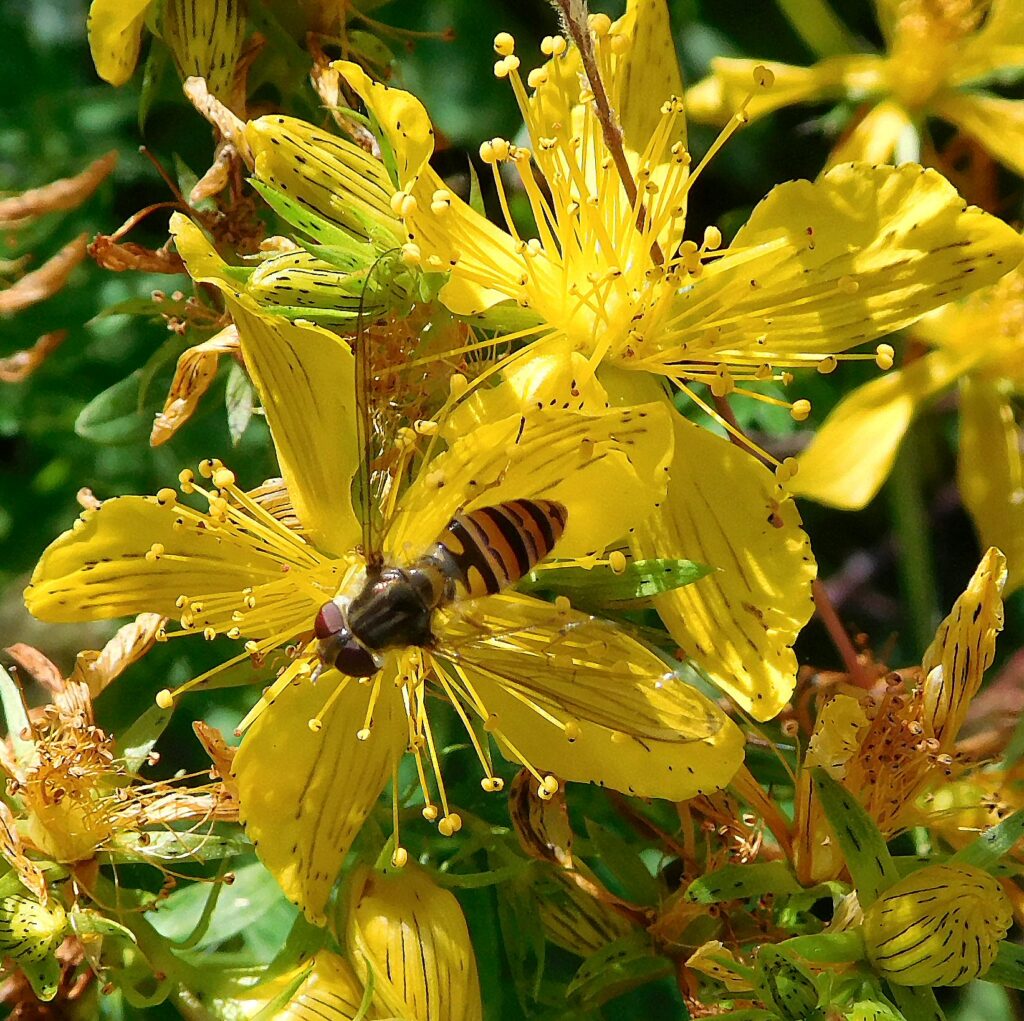
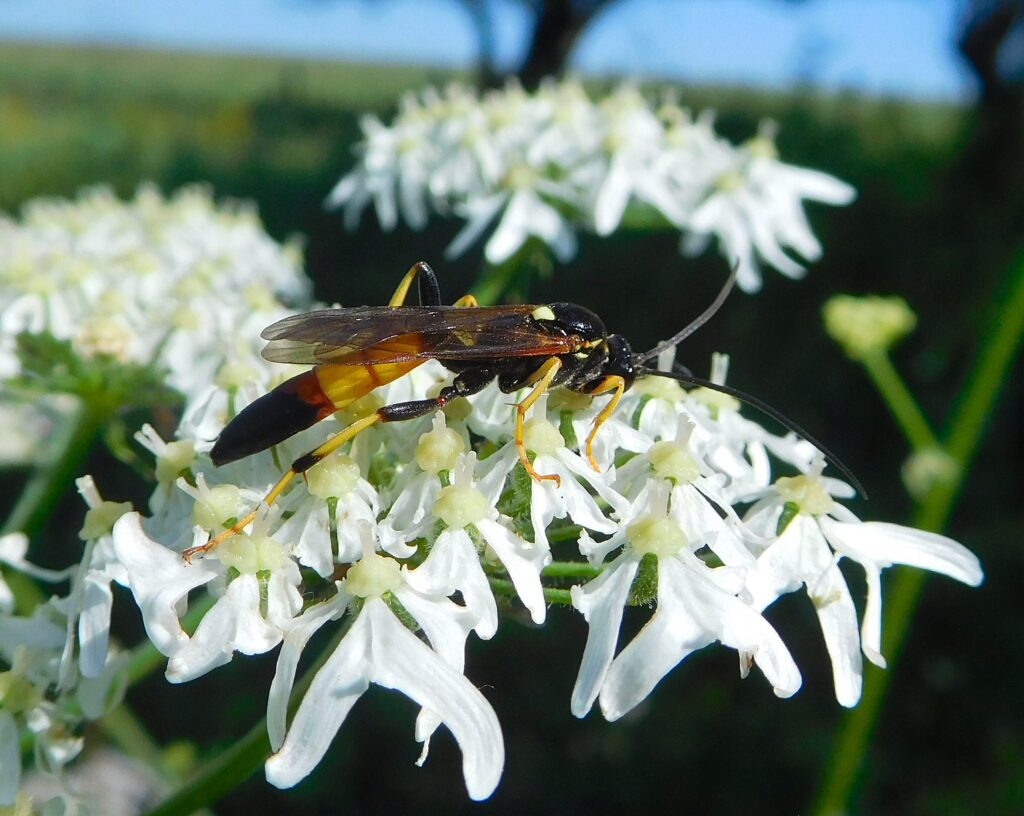
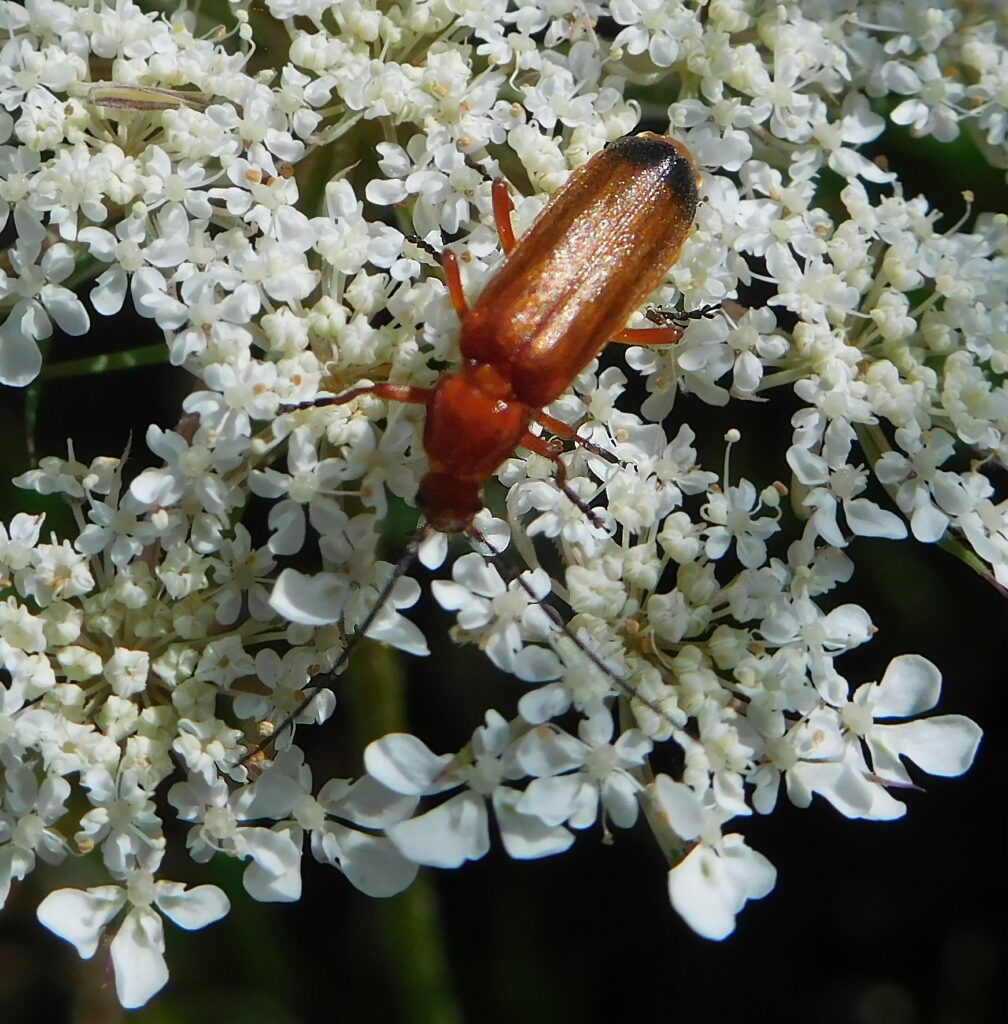
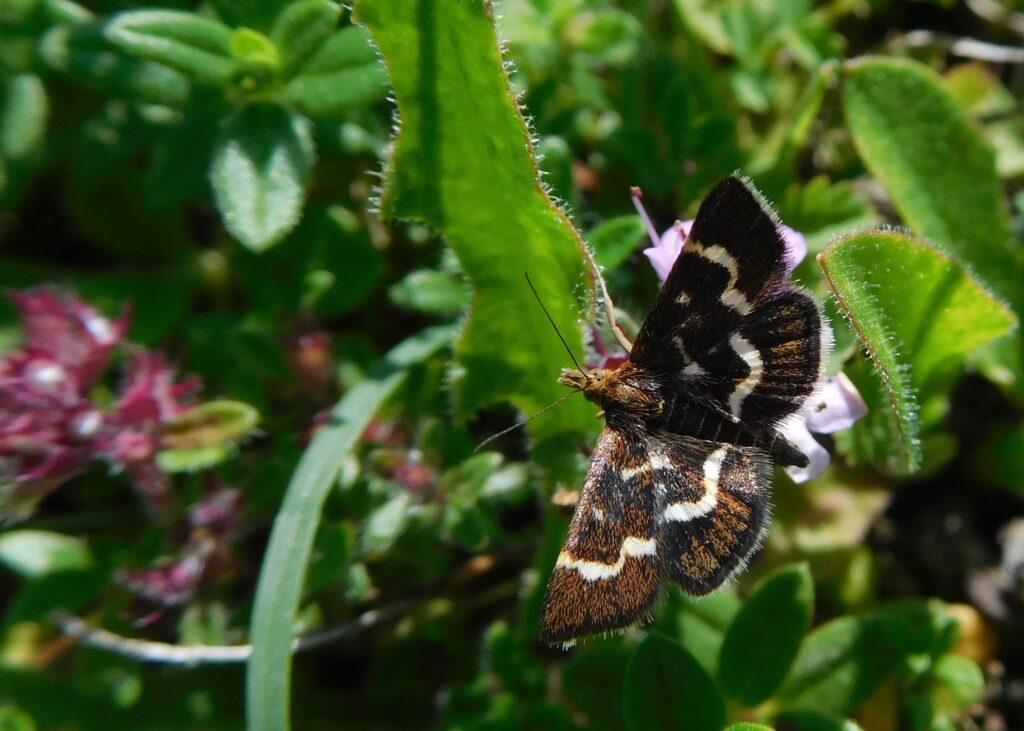
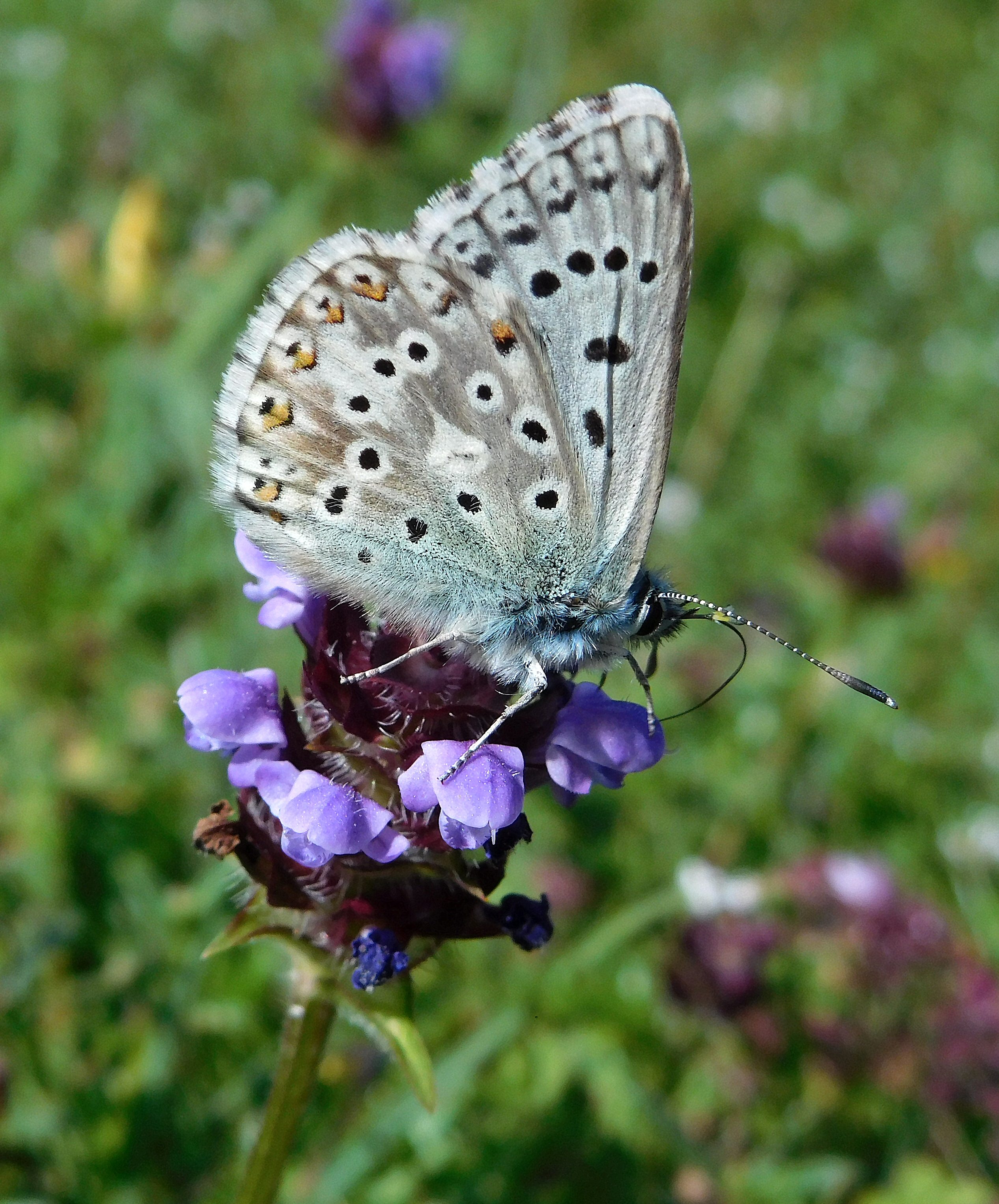
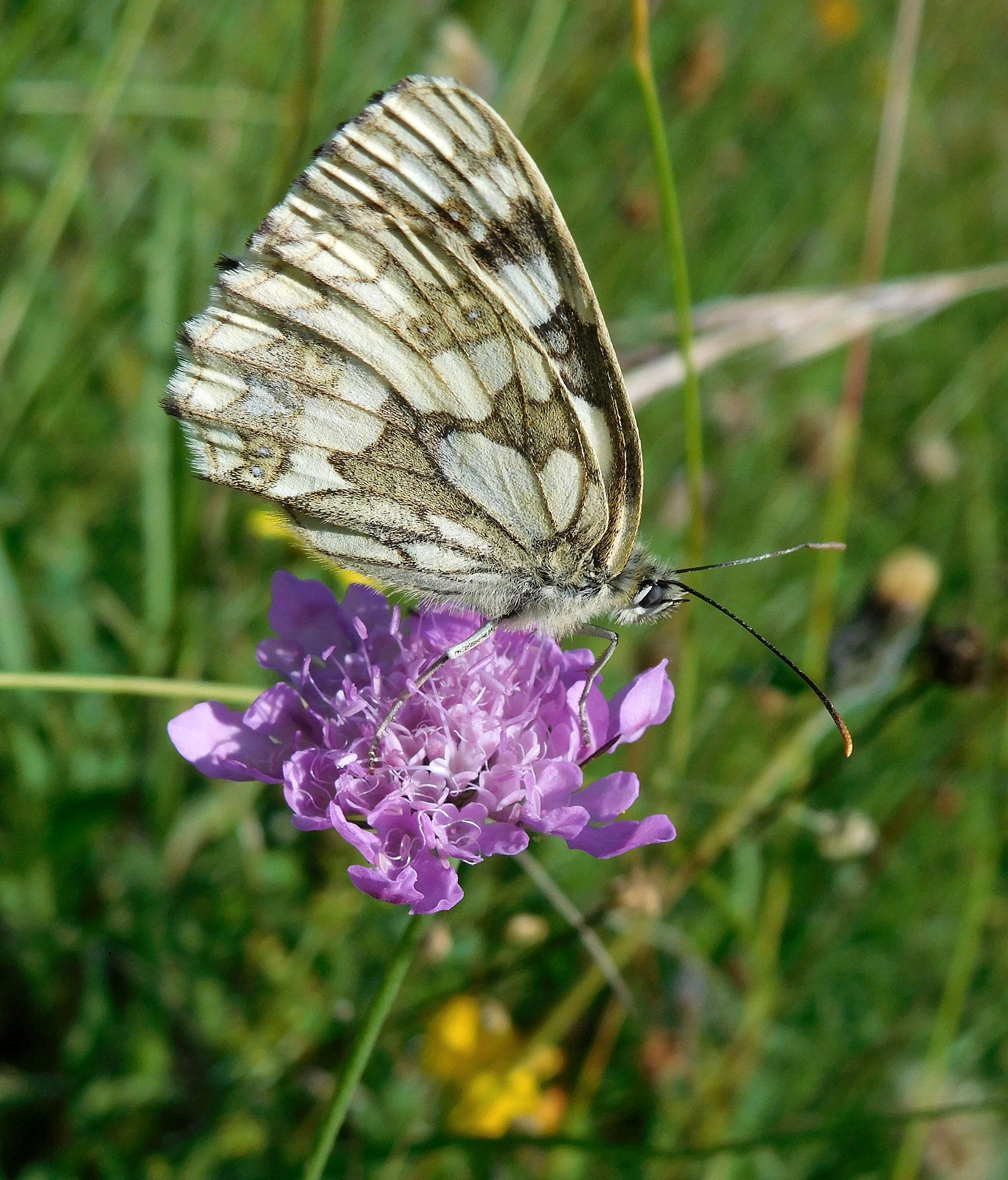
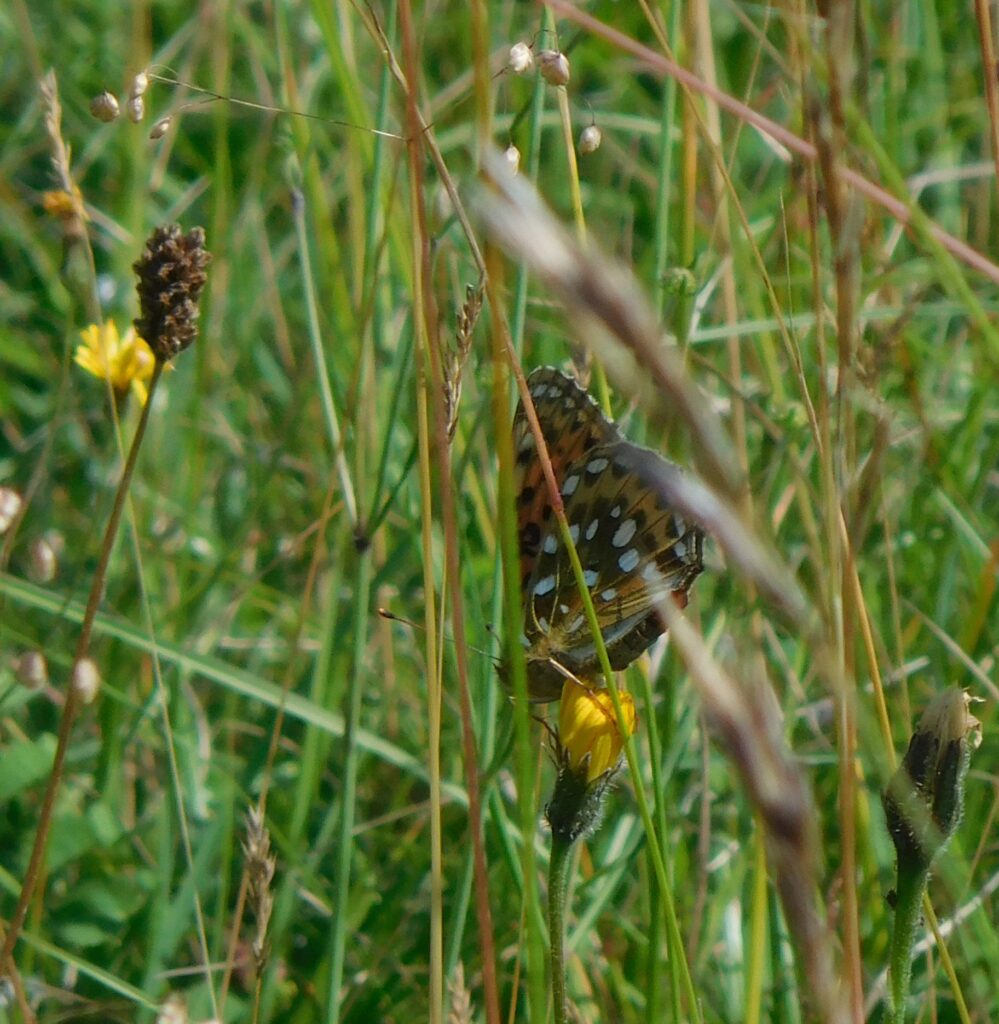
There were also Small Whites, Meadow Browns, Gatekeepers, Small Skippers, and possibly Chalkhill Blues about.
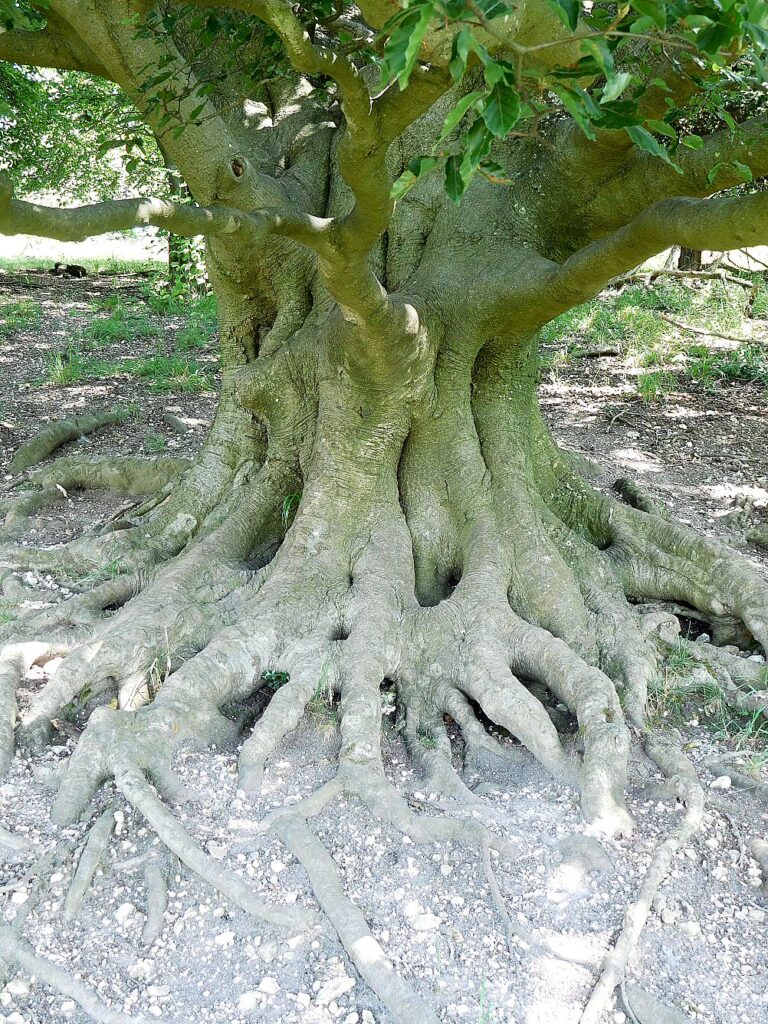
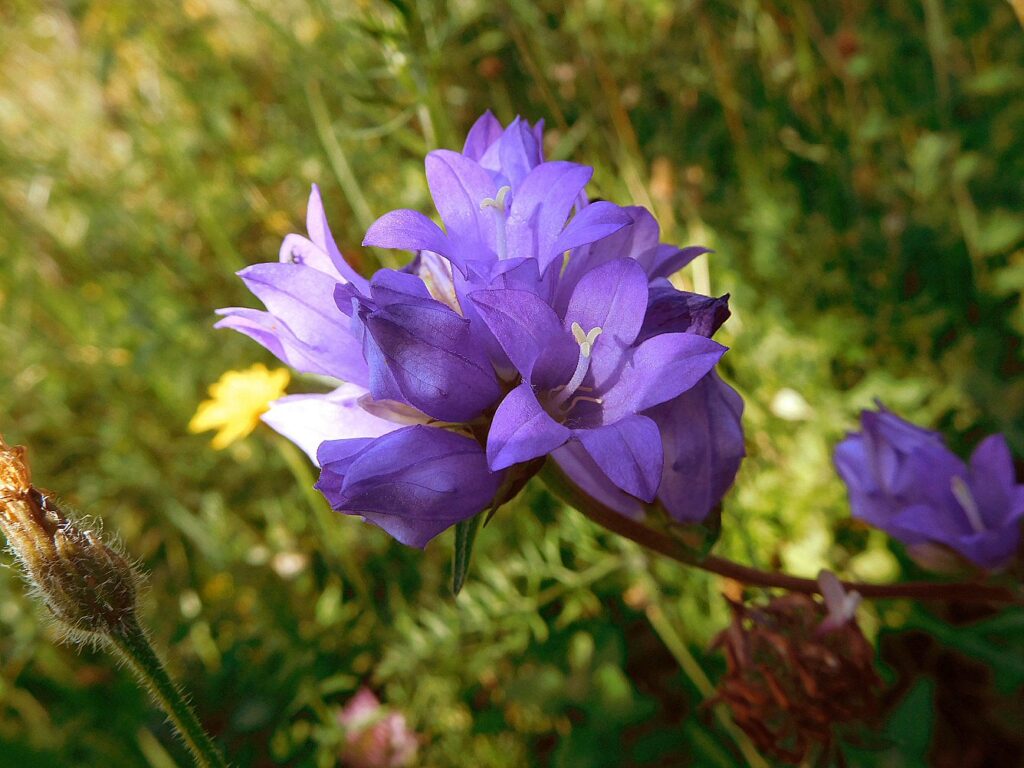











There were also Small Whites, Meadow Browns, Gatekeepers, Small Skippers, and possibly Chalkhill Blues about.



Balm to the urban soul … Cherhill Down and monument, taken from the edge of the Iron Age Hill Fort (the White Horse just out of shot, to the right). A view that must stretch for 50 miles. Silence. Space. Sky.
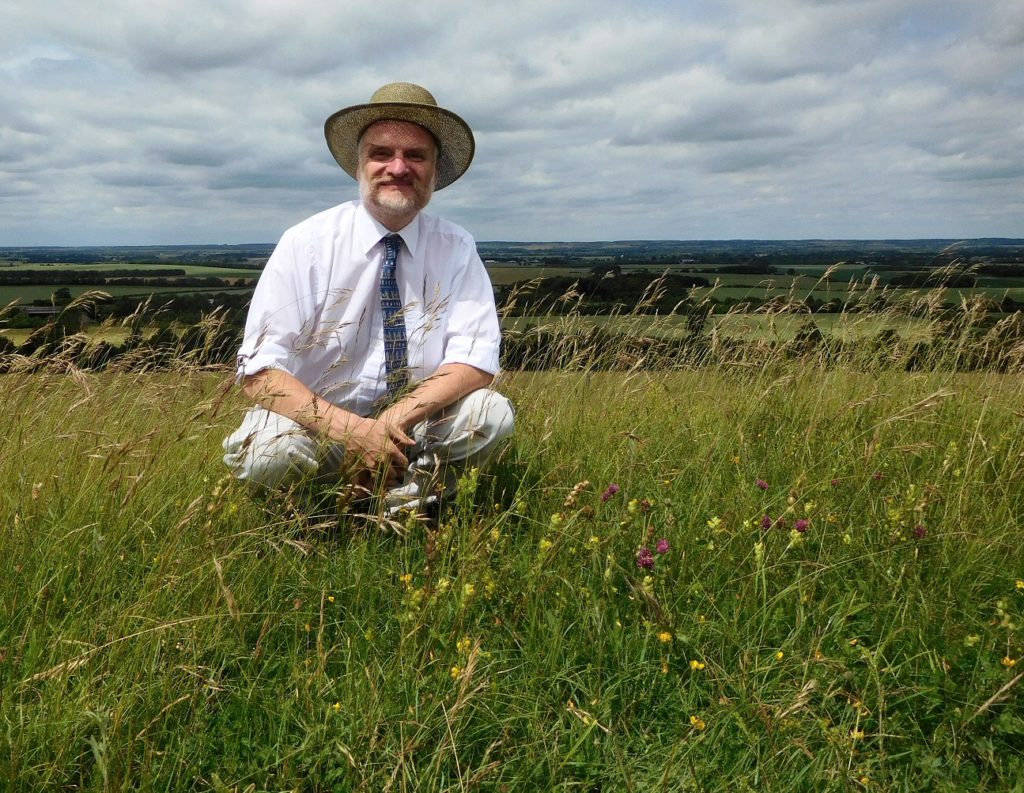
Much of East Anglia is flat, and very low-lying, indeed parts of the Fens are basically at sea level. But there are some hills, and even a Chalk escarpment. It’s pretty low, but still affords a fine view northwards across the plains. The nearly complete “failure of a major escarpment” is the result of the Ice Ages – the ice sheet, maybe a mile thick, ground interminably over the hills and plains, reducing most of the chalk to rock flour with flints, creating the sticky Boulder Clay that carpets much of eastern England. But at Royston, a delightful range of low hills survives, and has somehow survived the plough and the developers.
The grass of Therfield Heath (Royston Hill) is thinned by the parasitic Yellow Rattle (Orobanchaceae, the Broomrape family of parasitic plants): it helpfully weakens the grass, allowing in many other flowers, so it’s a bit of a Keystone Species, one on which the health of the ecosystem depends.
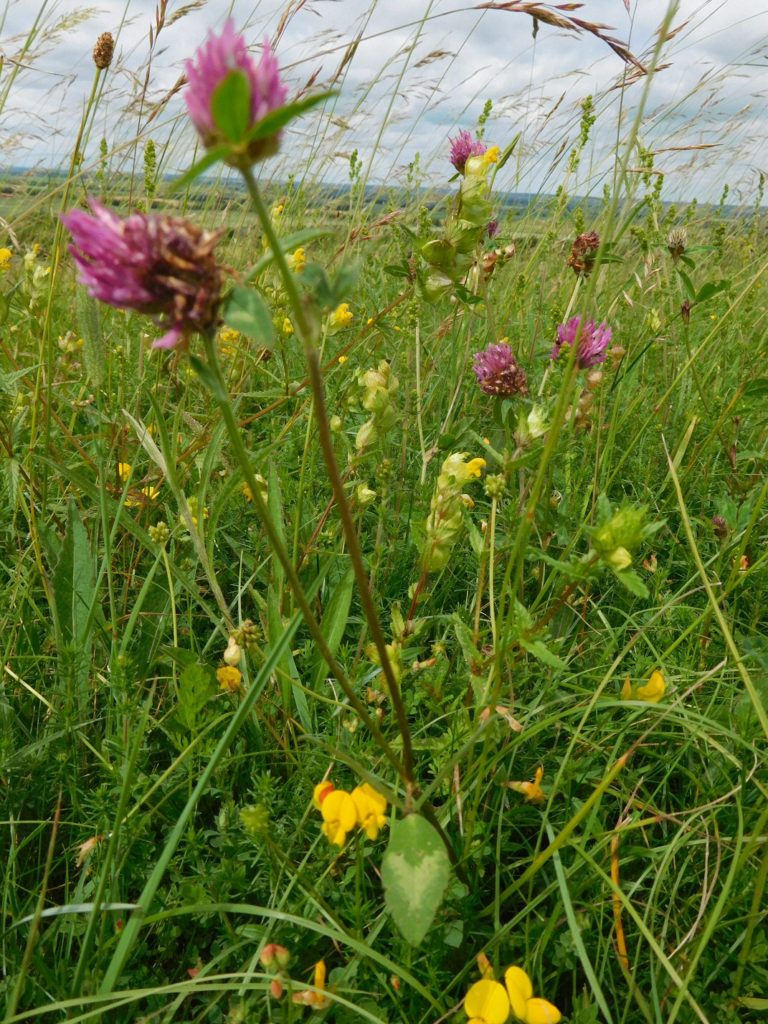
The plants let in by the weakening of the grass include a colourful and increasingly rare assemblage, which includes Kidney Vetch, Birdsfoot Trefoil, Rockrose, Thyme, Wild Mignonette and many others.
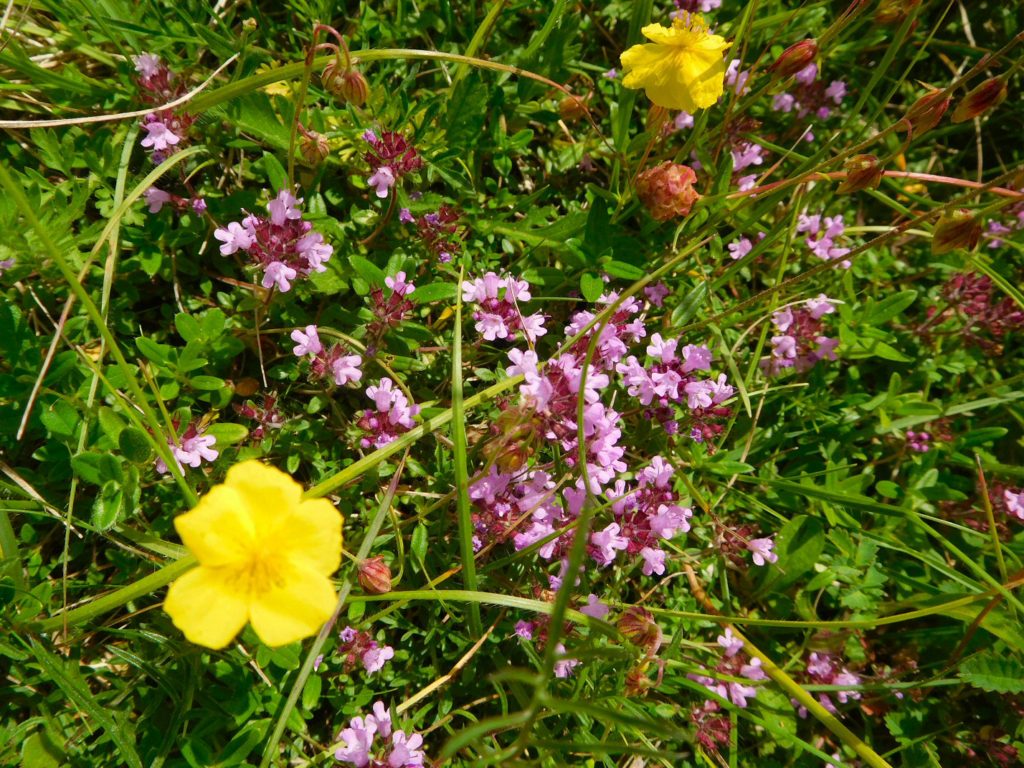
The flowers in turn support butterflies including Marbled White, Meadow Brown, and Small Heath. Half-a-dozen Skylarks were singing all around; one got up pretty close to us for a brief song-flight, quickly followed by several of his neighbours. A Swift dashed overhead. All these once-familiar and widespread species are becoming rather special, a measure of the ecological disaster that has spread not just across England but across Europe and, really, the whole world.
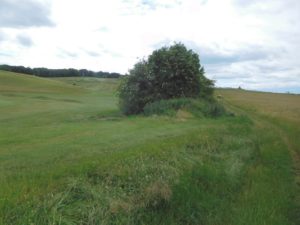
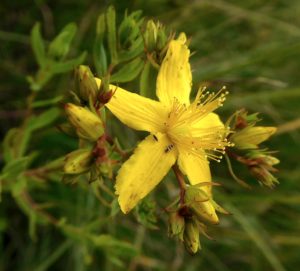
It’s interesting to see a pattern in the distribution of plants. I last saw Dropwort on Helsington Barrows, a limestone hill at the southern edge of the Lake District (not a place with much limestone, given the area’s ancient volcanic rocks and slates). Here it’s on a very different form of limestone, chalk, but if the soil is alkaline and supports open grassland, that’s fine with Dropwort. It’s a plant with a beautiful foamy white cluster of flowers on a rather isolated stalk rising from the grassland. The attractive foaminess is reminiscent of Meadowsweet, Filipendula ulmaria, and indeed Dropwort is in the same genus: it’s Filipendula vulgaris, though it could hardly be called common these days.
I had the good fortune to get down to West Wiltshire in hot if sometimes humid summer weather.
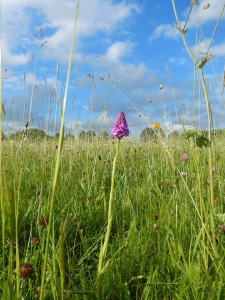
It was a pleasure to find the Pyramidal Orchid in a flowery meadow near a town: despite the dog-walkers, the increasingly uncommon flowers were clearly spreading from a small patch across the meadow, which is mown annually.
Less pleasantly, there were next to no insects pollinating the flowers: we saw one Small Tortoiseshell, a fly or two, and one (white/buff-tailed) bumblebee. It was a stark contrast to the masses of bees and beetles I’ve seen on the reserve in London. Of course, in London there is now very little use of pesticides, and basically none on an industrial scale.
This year (2014) does seem to be particularly poor for butterflies. It was an extremely warm winter and a very wet and windy spring, so I wonder if the result has not been a bad spring for insect pests … and perhaps, whether England’s farmers have not sprayed insecticide especially heavily? It’s a question that could clearly be answered by someone. If the answer is yes, then our ‘useful insects’ have suffered very heavily as a consequence.
The next day we went to Cley Hill, a western outlier of the Salisbury Plain chalk downs, sticking up above the plain below the chalk escarpment.
In the short grass, full of lovely flowers – Sainfoin, Milkwort, Horseshoe Vetch – were Bee Orchids, and happily both bumblebees in this special place protected by the National Trust and Burnet Moths – mostly Five-Spot Burnet, with some Transparent Burnet too, quite a treat.
On the top of the hill, above the Iron Age earthworks, we came across a group of about five Wall Brown butterflies, all very tatty and worn: perhaps they had been blown across the Channel from France on the warm southerly wind that is accompanying this anticyclone (centred to the east). Nearby were a few Brown Argus, small butterflies in the Blue family: not uncommon in France, far from common in England. Their coloration may seem odd for the Blue family, but females of quite a few species are brown, contrasting with their bright blue males, so the genes for ‘brown’ are clearly available: perhaps it takes just one or a few genetic switches to turn on brownness in both sexes rather than in just one.
In several places on the hill, often on bare chalk paths or short grass, we saw the glowing blue and purplish blue of Adonis Blue butterflies, with their chequered wing borders. So we saw some rather special butterflies, though with the definite feeling that they are only just hanging on in the area.
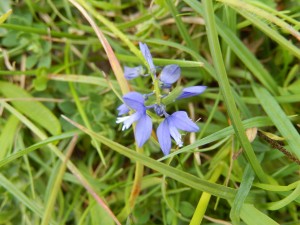
The hill is also host to Chalk Fragrant Orchid, Pyramidal Orchid, Spotted Orchid and more: it was lovely to see them all, though we were moved on swiftly by an anxious pair of Skylarks circling rather low overhead, trying to get back down to their nest, clearly not far from where we were sitting. All around in the thorn bushes were Tree Pipits, singing away, with some twittering Goldfinches and one Yellowhammer, my first of the year: yet another species that was once commonplace in every hedge.
Down to Aston Rowant on a fine clear sunny day with a cold East wind that brought spring migrants like the Ring Ousel, a rare blackbird of mountain and moorland. I saw a probable one diving into a juniper bush; they like to stop off on the scarp of the Chiltern Hills as the next best thing to their favoured moors, before flying on to Wales or wherever.
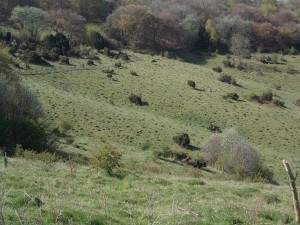
The scarp slope of the relatively hard Chalk falls steeply to the broad plain of the soft Oxford Clay below, to the West. Much of the grassland has been destroyed for agriculture, either falling under the plough or simply being ‘improved’ as pasture with fertiliser, encouraging long grasses at the expense of the wealth of flowers that once covered the English countryside. Happily, here in the reserve and in quite a few places on the Chilterns, the steepness of the land has discouraged improvement. The chalk grassland is dotted with hundreds of anthills, the tiny yellow ants living all their lives below ground, tempting green woodpeckers to come out and hunt for them.
The trees and flowers are visibly weeks behind those of London. The Whitebeam is just coming into its fair white leaves, which look almost like Magnolia flowers in their little clusters newly burst from the bud. But the tree’s name comes from its white wood, not its leaves.
At the bottom of the scarp, a field away from the Ridgeway which follows the line of hills for many miles, Hornbeams and Birches marked a change in the soil, which must be neutral or acid down here, compared to the strictly alkaline rendzinas and brown earths of the chalk. One of the Hornbeams looked as if it was oddly full of Mistletoe, but up close it proved to be a mass of Witch’s Brooms, growths of the tree itself caused by an infection.